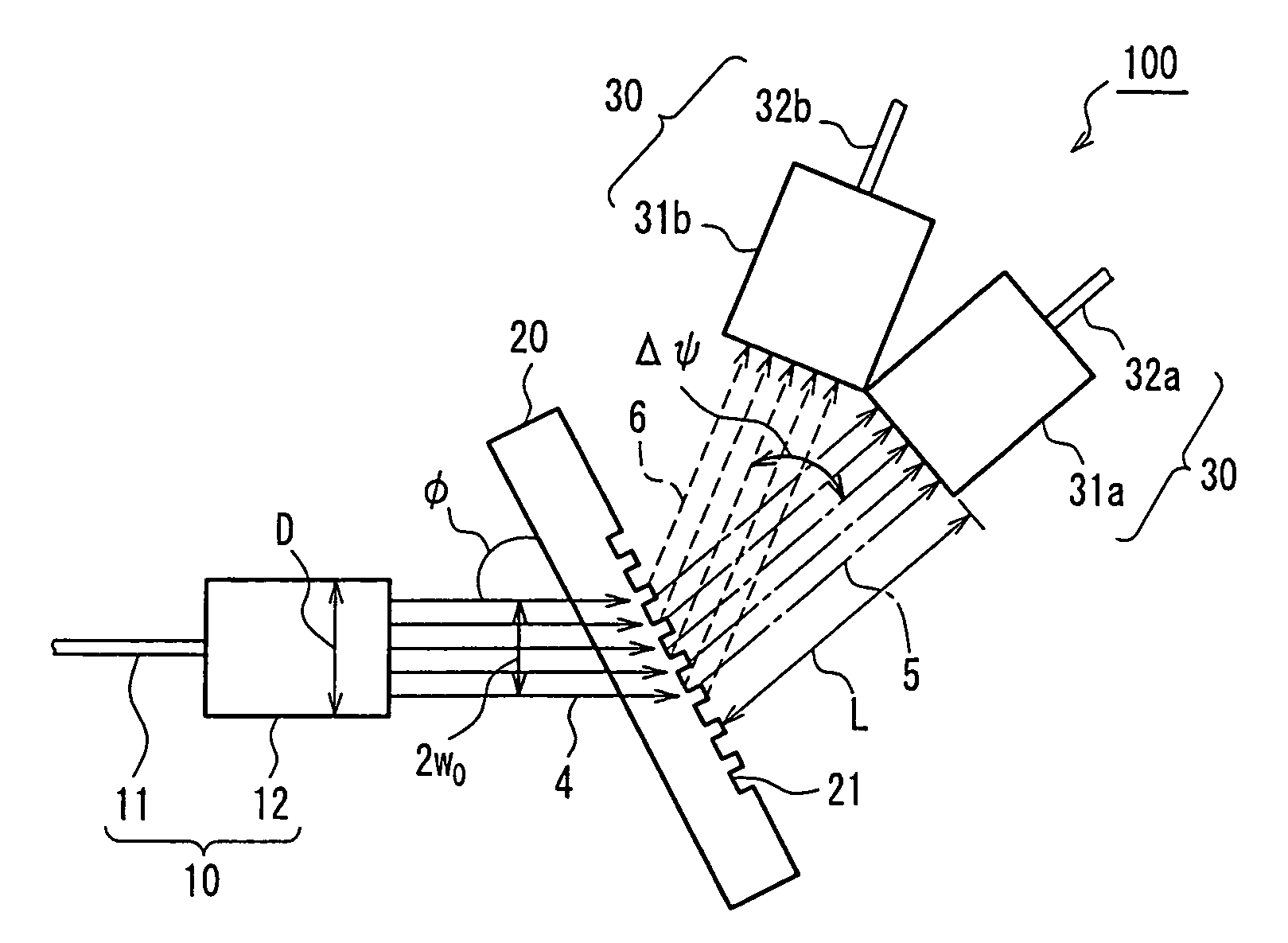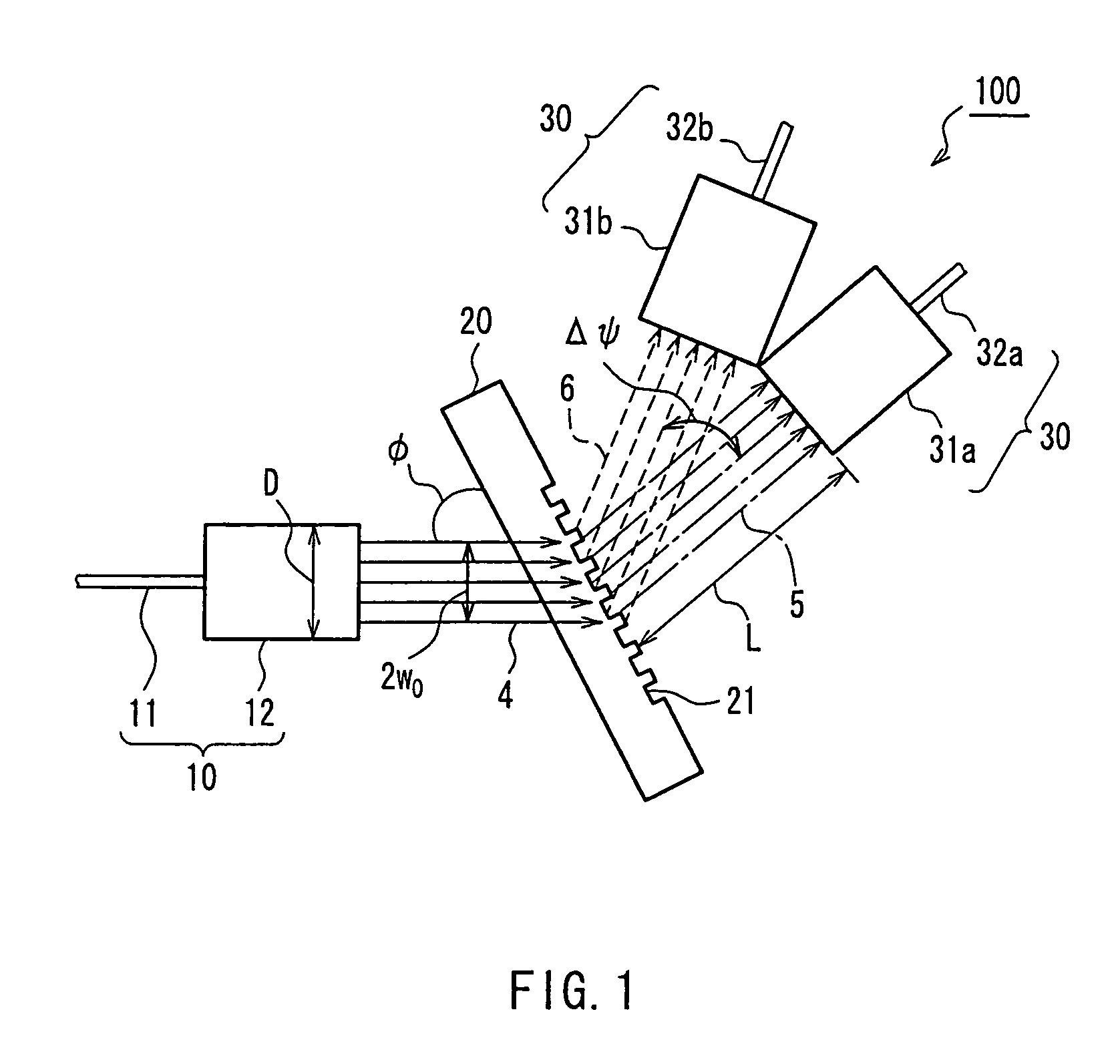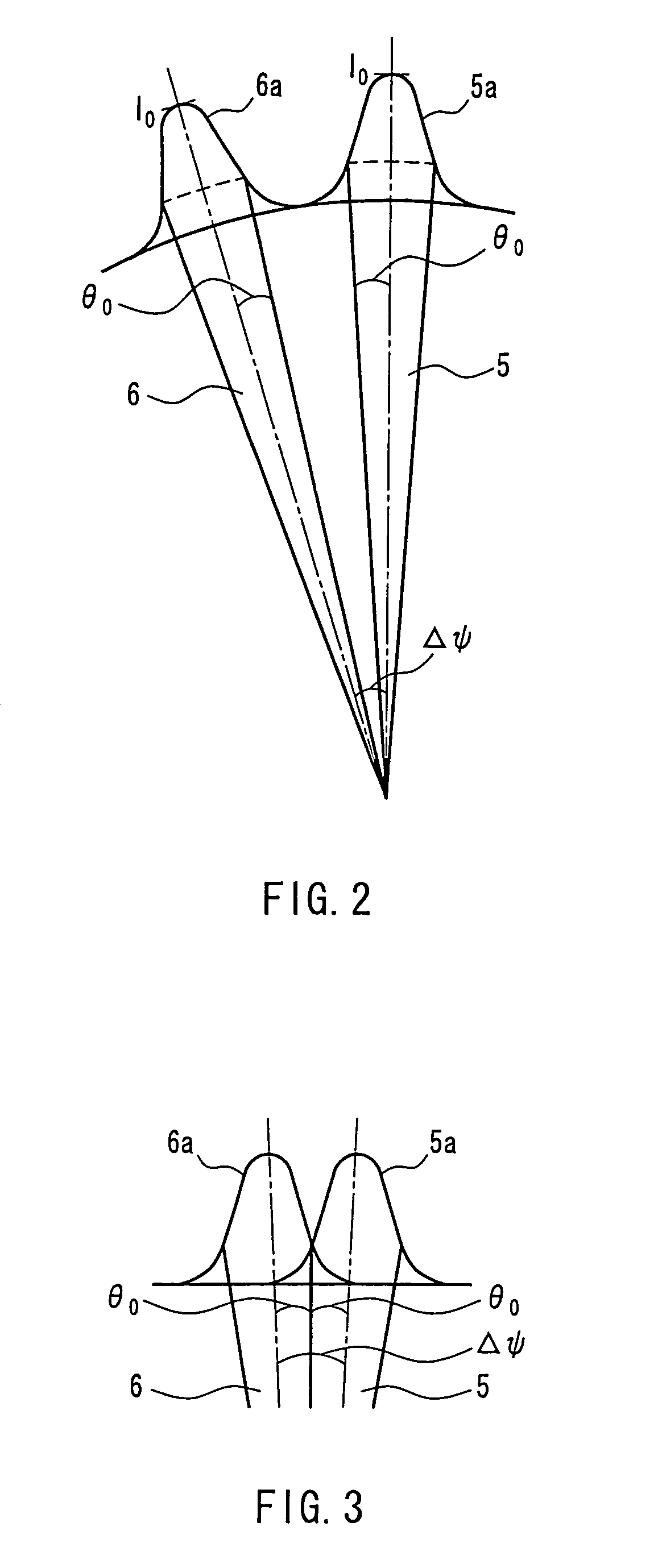Spectrometer using diffraction grating
a technology of spectrometer and grating, which is applied in the direction of spectrometry/spectrophotometry/monochromator, optical radiation measurement, instruments, etc., can solve the problems of large optical components such as diffraction gratings or lenses, large spectrometers, and high cost, and achieve high wavelength resolution power
- Summary
- Abstract
- Description
- Claims
- Application Information
AI Technical Summary
Benefits of technology
Problems solved by technology
Method used
Image
Examples
embodiment 1
[0050]A spectrometer using a diffraction grating according to Embodiment 1 of the present invention is explained using FIG. 1. FIG. 1 is a diagram showing the configuration of a spectrometer 100 according to Embodiment 1 of the present invention. The spectrometer 100 of Embodiment 1 comprises a light-incident portion 10, a diffraction grating 20 and a light-emitting portion 30.
[0051]The light-incident portion 10 has an optical fiber 11, which is an incident-side optical waveguide, and a collimating lens 12, which converts a light beam into a substantially collimated light beam. The optical fiber 11 is a single-mode fiber (this includes polarization preserving fibers), and its numerical aperture is NA. The optical fiber 11 transmits light beams that include a plurality of wavelength components and approximate Gaussian beams. It should be noted that the NA is defined by the far field spread angle at which the intensity of the Gaussian beam is 1 / e2 of that at the center.
[0052]The colli...
embodiment 2
[0093]A spectrometer 200 using a diffraction grating 20 according to Embodiment 2 of the present invention is explained with reference to FIG. 4. FIG. 4 is a schematic diagram showing the configuration of the spectrometer 200 according to Embodiment 2 of the present invention. The spectrometer 200 of Embodiment 2 differs from the spectrometer 100 of Embodiment 1 with regard to the fact that it uses an optical fiber 11a that is a multi-mode fiber, instead of the single-mode optical fiber 11, but the remaining configuration is the same. Thus, identical members are denoted by identical numerals, and their further explanation has been omitted.
[0094]Since the optical fiber 11a at the light-incident portion 10 of Embodiment 2 is a multi-mode fiber, the light that is transmitted through and emitted from the optical fiber 11a can be regarded as light emitted from a planar light source (optical fiber 11a) having a uniform optical intensity. The conditions for minimization of the spectrometer...
embodiment 3
[0118]A spectrometer 300 using a diffraction grating according to Embodiment 3 of the present invention is explained with reference to FIG. 5. FIG. 5 is a schematic diagram showing the configuration of the spectrometer 300 according to Embodiment 3 of the present invention. The spectrometer 300 of Embodiment 3 differs from the spectrometer 100 of Embodiment 1 with regard to the fact that only one focusing lens33 used for all of the light beams of different wavelengths is provided. Emission-side optical fibers 34a and 34b are arranged at the outgoing end of the focusing lens 33. The spectrometer 300 of Embodiment 3 uses either the single-mode optical fiber 11 shown in Embodiment 1 or the multi-mode optical fiber 11a shown in Embodiment 2. The remaining configuration of the spectrometer 300 of Embodiment 3 is substantially the same as that of the spectrometer 100 of Embodiment 1. Therefore, identical members are denoted by identical numerals, and their further explanation has been omi...
PUM
 Login to View More
Login to View More Abstract
Description
Claims
Application Information
 Login to View More
Login to View More - R&D
- Intellectual Property
- Life Sciences
- Materials
- Tech Scout
- Unparalleled Data Quality
- Higher Quality Content
- 60% Fewer Hallucinations
Browse by: Latest US Patents, China's latest patents, Technical Efficacy Thesaurus, Application Domain, Technology Topic, Popular Technical Reports.
© 2025 PatSnap. All rights reserved.Legal|Privacy policy|Modern Slavery Act Transparency Statement|Sitemap|About US| Contact US: help@patsnap.com



